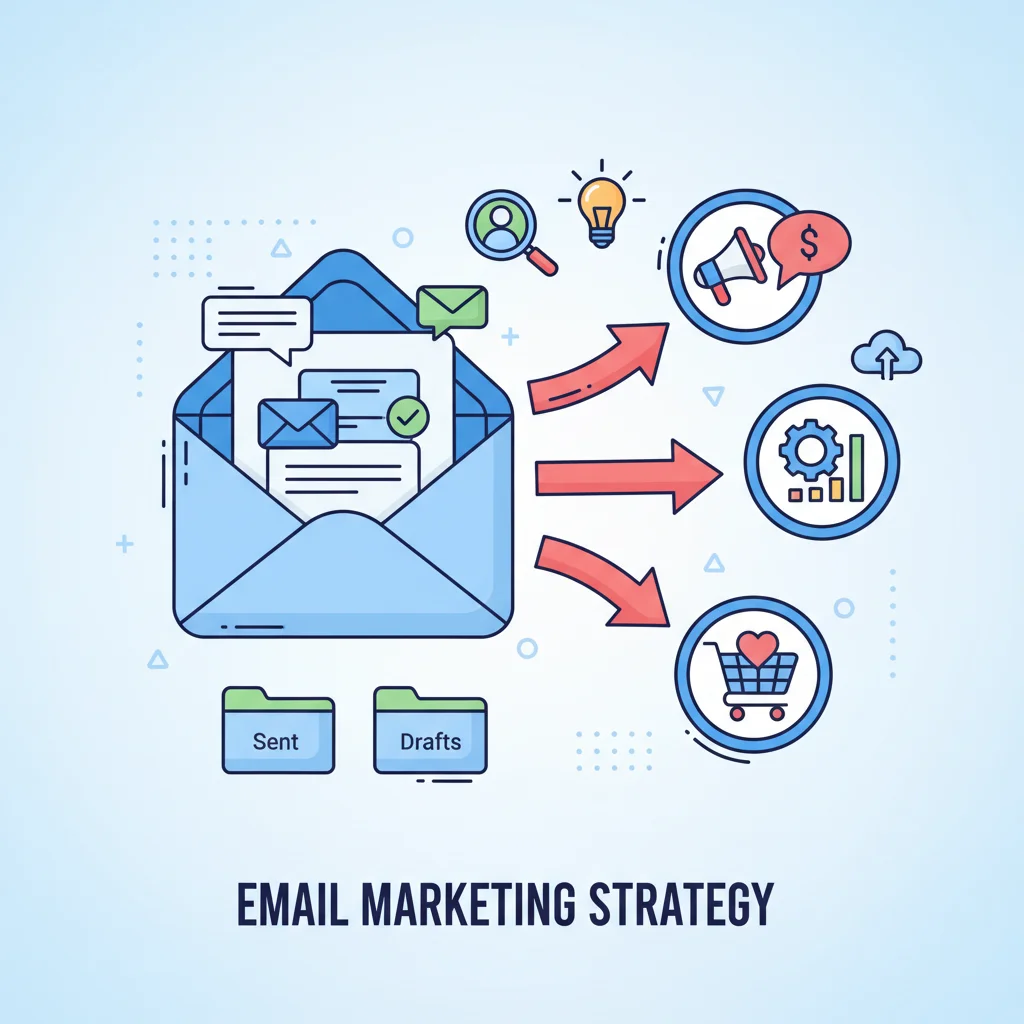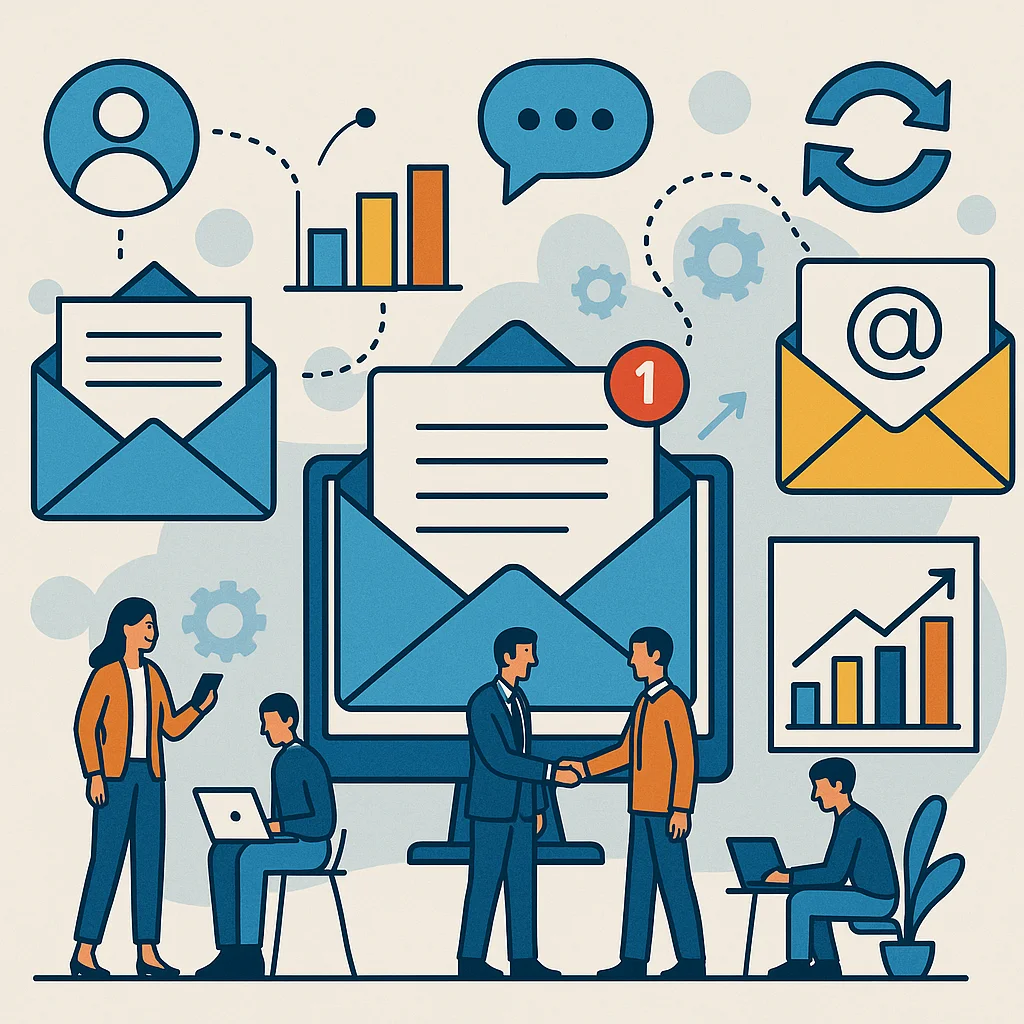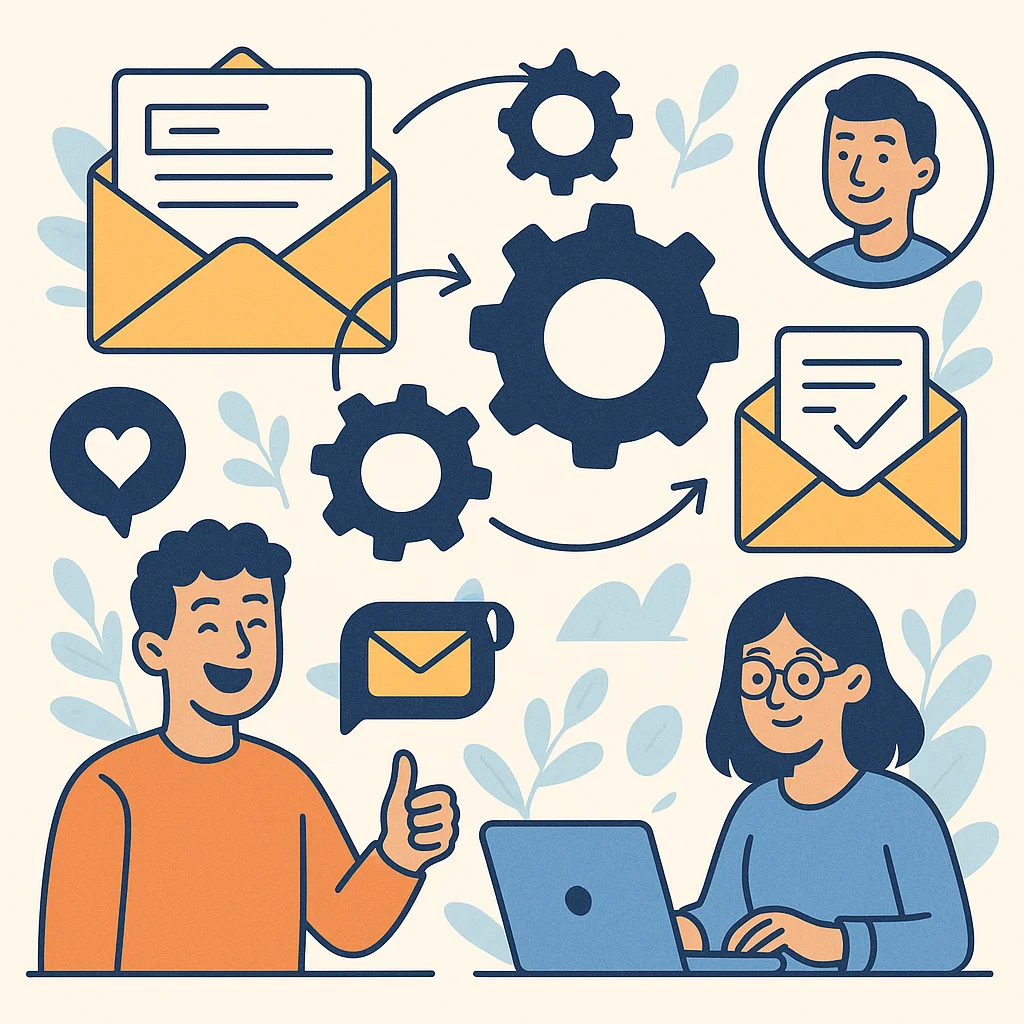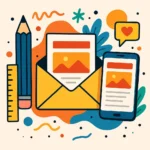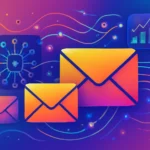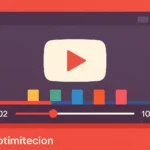Now Reading: How to Use Email Marketing to Collect Customer Testimonials Effectively
-
01
How to Use Email Marketing to Collect Customer Testimonials Effectively
How to Use Email Marketing to Collect Customer Testimonials Effectively
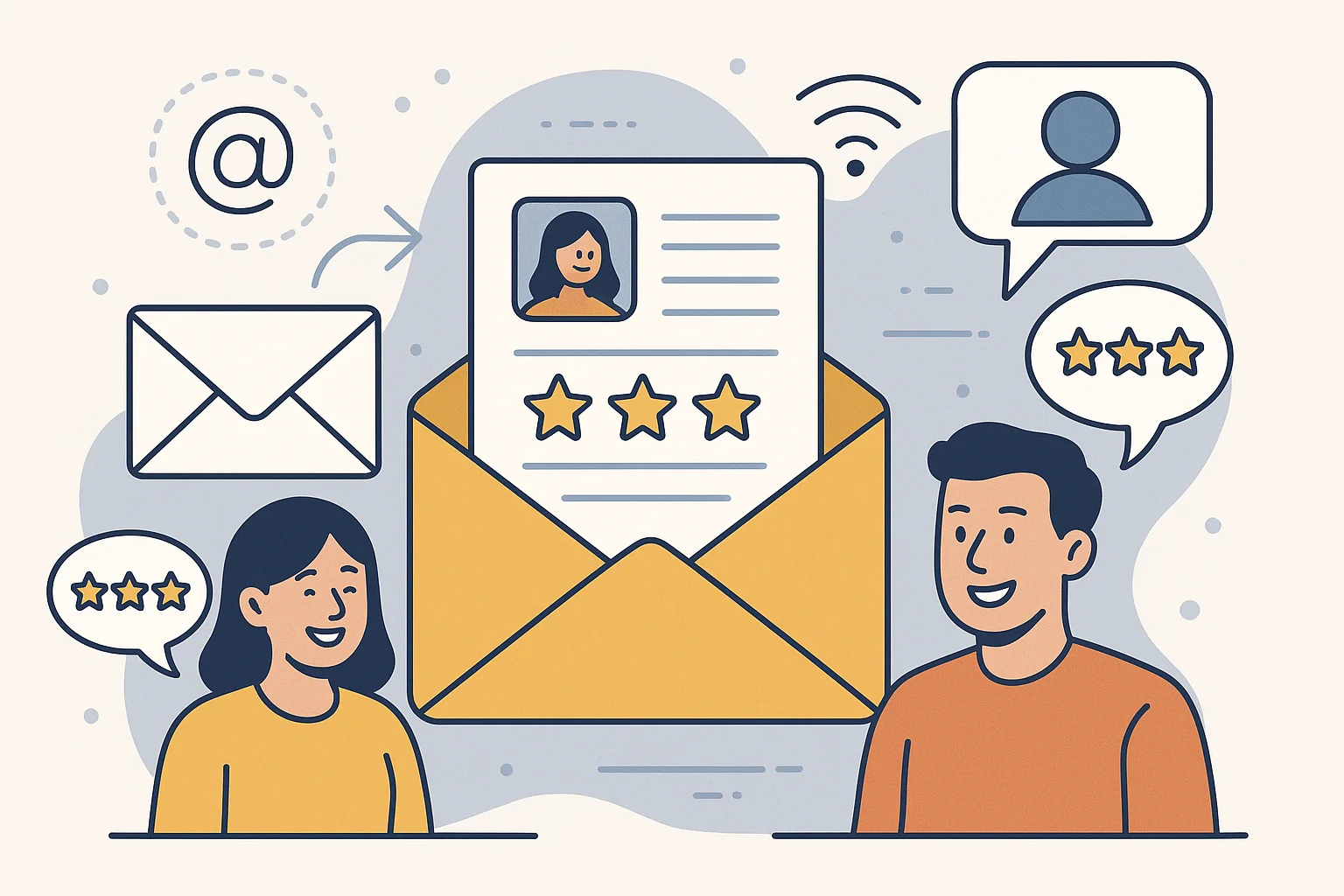
You know that sinking feeling when you’re staring at a blank email, trying to figure out how to ask customers for testimonials without sounding desperate? I get it. Email marketing for customer testimonials can feel awkward, but it’s actually one of the most powerful ways to build trust and drive conversions. There’s a simple system that turns happy customers into your biggest advocates.
Key Takeaways
Email marketing is the most effective way to collect customer testimonials because it allows you to reach customers directly, personalize your requests, and follow up systematically. Here’s how to make it work:
- Time your requests strategically – reach out 2-4 weeks after purchase when the experience is fresh
- Personalize every email – use customer names and reference specific products they bought
- Make it easy – provide simple templates or one-click rating systems
- Offer incentives – discounts or small gifts can boost response rates significantly
- Follow up politely – gentle reminders often turn non-responders into testimonial providers
- Use multiple touchpoints – combine purchase follow-ups, surveys, and dedicated testimonial campaigns
When To Send Testimonial Request Emails
Timing is everything when it comes to email marketing for customer testimonials. Send too early, and customers haven’t had time to form an opinion. Wait too long, and the excitement has worn off.
The Sweet Spot Window
The optimal timing is 2-4 weeks after purchase. This gives customers enough time to unbox, try, and form genuine opinions about your product. For services, I recommend waiting until they’ve completed their first project or milestone.
Here’s what works for different business types:
- Physical products: 2-3 weeks after delivery
- Digital products: 1-2 weeks after purchase
- Services: After project completion or first month
- Subscriptions: 30-45 days into their subscription
Trigger-Based Timing
Smart businesses use behavioral triggers to time their testimonial requests perfectly:
- Customer support interactions (when issues are resolved positively)
- Repeat purchases (they clearly love what you offer)
- High engagement with your content
- Completion of onboarding sequences
Useful Articles:
Crafting Irresistible Testimonial Request Emails
The secret to successful email marketing for customer testimonials isn’t just asking – it’s asking in a way that makes customers want to help. Your email needs to feel personal, genuine, and easy to respond to.
Essential Elements Of Every Request
Start with genuine appreciation. Thank them for their business before asking for anything. People respond better when they feel valued, not used.
Be specific about what you need. Instead of “can you write a review,” try “would you mind sharing what you liked most about the [specific product]?” Specific requests get specific responses.
Make it stupidly easy. The harder you make it, the fewer responses you’ll get. Provide templates, ask simple questions, or offer one-click rating systems.
The Psychology Behind Yes
People say yes to testimonial requests when three conditions are met:
- They feel appreciated for their business
- The request feels reasonable and won’t take forever
- They can see how their feedback helps others make good decisions
Your email should hit all three points naturally, without sounding manipulative or pushy.
Email Templates That Actually Work
Here are proven templates for email marketing for customer testimonials that consistently get responses:
Template 1: The Simple Ask
Subject: Quick favor? Share your [Product] experience
Hi [Name],
I hope you're loving your [Product Name]!
I'm reaching out because I'd love to hear about your experience. Would you mind taking 2 minutes to share what you think?
Your feedback helps other customers make confident decisions, and I genuinely value your opinion.
[Simple feedback form link]
Thanks so much,
[Your name]Template 2: The Success Story Request
Subject: [Name], how's your [Product] working out?
Hi [Name],
It's been a few weeks since you got your [Product Name], and I'm curious – how's it going?
If you're happy with your results, would you consider sharing your experience? I love featuring customer success stories because they help others see what's possible.
No pressure at all – just reply to this email with a few sentences about your experience if you're up for it.
Appreciate you,
[Your name]Template 3: The Incentive Approach
Subject: Quick testimonial = 20% off your next order
Hi [Name],
Hope you're enjoying your [Product Name]!
I'm collecting customer stories to help others discover products they'll love. If you'd be willing to share a quick testimonial about your experience, I'd love to send you 20% off your next purchase as a thank you.
Just hit reply and tell me:
- What you love most about [Product]
- How it's helped you
- Anything else you'd want others to know
Thanks for being awesome,
[Your name]Template 4: The Video Request
Subject: 2-minute video testimonial?
Hi [Name],
Your recent purchase of [Product Name] got me thinking – you might be perfect for a quick video testimonial!
If you're happy with your experience, would you consider recording a 1-2 minute video sharing your thoughts? It's super casual – just talk about what you like and how it's helped you.
I know it's a bigger ask than a written review, so I'd love to send you [incentive] as a thank you.
Interested? Just reply and I'll send you the simple details.
Best,
[Your name]Useful Articles:
Personalizing Your Testimonial Requests
Generic emails get generic results (if any). Personalization is what transforms email marketing for customer testimonials from spam into genuine conversation.
Beyond “Dear [Name]”
Real personalization goes deeper than just using someone’s first name. Reference their specific purchase, mention how long they’ve been a customer, or acknowledge their previous interactions with your brand.
Instead of: “Hope you’re enjoying your recent purchase”
Try: “How are you liking those blue running shoes you ordered last month?”
Segmentation Strategies
Different customers need different approaches:
New customers need more context about why testimonials matter
Repeat customers can be approached as valued community members
High-value customers deserve extra attention and potentially bigger incentives
Dynamic Content Magic
Use your email platform’s dynamic content features to automatically personalize:
- Product names and images
- Purchase dates and order details
- Recommended testimonial formats based on past behavior
- Relevant incentives based on purchase history
Following Up Without Being Annoying
Most testimonials come from follow-up emails, not initial requests. But there’s a fine line between persistent and pushy.
The Three-Touch Rule
I use a simple three-email sequence:
- Initial request (2-3 weeks after purchase)
- Gentle reminder (1 week later)
- Final ask (1 week after that)
After three attempts, I move on. Respect their decision and focus on other customers.
Making Follow-Ups Feel Fresh
Each follow-up should offer something new:
- Email 1: Simple request with easy response options
- Email 2: Add social proof (“Join 500+ happy customers who’ve shared their stories”)
- Email 3: Increase the incentive or offer alternative ways to help
The Soft No Strategy
Sometimes customers can’t write testimonials but still want to help. Offer alternatives:
- Quick star rating instead of written review
- Permission to use their purchase as social proof
- Referral to friends who might be interested
Useful Articles:
Using Testimonials In Your Email Campaigns
Collecting testimonials is only half the battle. The real magic of email marketing for customer testimonials happens when you strategically showcase them to drive conversions.
Product Launch Emails
When introducing new products, testimonials from beta testers or similar products build immediate credibility. People trust other customers more than marketing copy.
Nurture Sequences
Sprinkle testimonials throughout your email sequences to address common objections:
- Hesitant about quality? Share testimonials about product durability
- Worried about customer service? Feature reviews praising your support team
- Unsure about value? Highlight testimonials mentioning ROI or savings
Abandoned Cart Recovery
Testimonials in cart abandonment emails can be the push customers need to complete their purchase. Show reviews specifically for the products they left behind.
Newsletter Content
Regular testimonial features keep social proof top-of-mind for subscribers. Create sections like “Customer Spotlight” or “Success Story of the Month.”
Advanced Testimonial Collection Strategies
Once you’ve mastered basic email marketing for customer testimonials, these advanced tactics can supercharge your results.
Survey-to-Testimonial Pipeline
Start with simple satisfaction surveys, then follow up with testimonial requests for your happiest customers. This two-step approach feels more natural and gets higher-quality responses.
Milestone Celebrations
Celebrate customer milestones (anniversaries, repeat purchases, achievements) and use the positive moment to request testimonials. People are more generous when they’re feeling good.
Community Building
Create exclusive customer communities where testimonials happen naturally through discussions and success sharing. Then ask permission to use the best stories in your marketing.
Partner Integration
Work with complementary businesses to cross-promote testimonial requests. Their customers might be perfect testimonial sources for your products.
Automating Your Testimonial Collection
Automation makes email marketing for customer testimonials scalable without losing the personal touch. Set up systems that work while you sleep.
Drip Campaign Setup
Create automated sequences triggered by:
- Purchase completion
- Product delivery confirmation
- Specific time intervals
- Customer behavior (repeat purchases, high engagement)
Smart Segmentation
Automatically segment customers based on:
- Purchase history and value
- Engagement levels
- Previous testimonial participation
- Product categories
Response Handling
Set up automated responses for:
- Thank you messages when testimonials are received
- Follow-up requests for more details
- Integration with review platforms
- Internal notifications for your team
Common Mistakes To Avoid
Even experienced marketers make these email marketing for customer testimonials mistakes:
Asking Too Soon
Patience pays off. Customers need time to form genuine opinions. Rushing the request often results in generic or lukewarm responses.
Making It Complicated
Every extra step reduces response rates. Keep forms short, questions simple, and the process as frictionless as possible.
Forgetting To Follow Up
Most testimonials come from second or third attempts. Don’t give up after one email.
Ignoring Mobile Users
Over 60% of emails are opened on mobile devices. Make sure your testimonial requests and forms work perfectly on smartphones.
Not Saying Thank You
Always acknowledge and thank customers who provide testimonials. It encourages future participation and builds stronger relationships.
Email marketing for customer testimonials isn’t just about collecting reviews – it’s about building relationships that turn customers into advocates. When you approach it with genuine appreciation and make the process easy and rewarding, you’ll be amazed at how willing people are to share their positive experiences.


